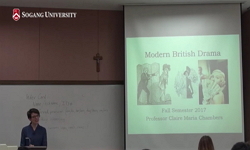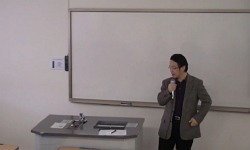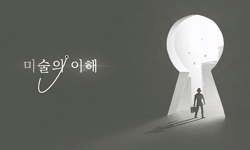한국 근대조각의 근대성을 관찰한 다수의 미술사가와 미술비평가들은 서구조각의 수용을 통한 전통조각과의 단절을 강조했다. 논자들의 입장은 그 수용을 수동적인 것으로 보느냐 아니면 ...
http://chineseinput.net/에서 pinyin(병음)방식으로 중국어를 변환할 수 있습니다.
변환된 중국어를 복사하여 사용하시면 됩니다.
- 中文 을 입력하시려면 zhongwen을 입력하시고 space를누르시면됩니다.
- 北京 을 입력하시려면 beijing을 입력하시고 space를 누르시면 됩니다.

조각의 근대성과 현대성: 한국근현대조각사 서술의 쟁점들 = Modernity and Contemporaneity of Sculpture: Issues in the Description of Modern and Contemporary Korean Sculpture History
한글로보기https://www.riss.kr/link?id=A108889365
-
저자
홍지석 (단국대학교)
- 발행기관
- 학술지명
- 권호사항
-
발행연도
2023
-
작성언어
Korean
-
주제어
History of Korean Sculpture ; Traditional Sculpture ; Modern Sculpture ; Contemporary Sculpture ; Modernism ; Abstract Sculpture ; Welded Sculpture ; Figurative Sculpture ; Realist Sculpture ; 한국조각사 ; 전통조각 ; 근대조각 ; 현대조각 ; 모더니즘 ; 추상조각 ; 용접조각 ; 구상조각 ; 사실조각 ; 형상조각
-
등재정보
KCI등재
-
자료형태
학술저널
-
수록면
31-57(27쪽)
- 제공처
-
0
상세조회 -
0
다운로드
부가정보
국문 초록 (Abstract)
한국 근대조각의 근대성을 관찰한 다수의 미술사가와 미술비평가들은 서구조각의 수용을 통한 전통조각과의 단절을 강조했다. 논자들의 입장은 그 수용을 수동적인 것으로 보느냐 아니면 능동적인 것으로 보느냐에 따라 갈라졌다. 전자는 ‘모방과 이식’을 후자는 현실의 리얼리티를 반영한 사실주의를 내세웠다. 좀 더 최근에는 근대조각을 가능케 했던 사회적 조건이나 물적 토대를 강조하는 논의들이 등장했다. 한편 한국 현대조각의 현대성에 관한 논의는 추상조각에 집중됐다. 많은 논자들이 해방 이후 추상조각의 도입과 전개에 각별한 의미를 부여하면서 추상조각을 근대조각과 구별되는 현대조각으로 내세웠다. 이렇듯 추상조각을 중심에 놓는 한국 현대조각사 서술은 추상조각의 역사-사회적 정당성을 주장하기 위해 추상조각의 한국적 변용 내지 재해석을 강조했다. 하지만 현대조각으로서 구상조각의 위상에 주목한 논자들도 있었다. 이들은 구상조각의 크고 작은 변화들에 주목하여 추상조각의 역사와 나란히 구상조각의 역사를 서술했다. 1960년대 이후 현대조각-추상조각의 전개를 다룬 논의들은 추상조각의 역사적 변화에 집중하면서 시대구분을 수행하는 통시적 관찰보다는 그 유형화 양상에 집중하는 공시적 접근에 주력하는 경향을 보였다. 이러한 경향은 조각 자체가 그와 유사하지만 동일하다고는 말할 수 없는 비조각, 오브제미술, 입체, 설치미술 등 새로운 미술형태들, 개념들의 등장에 따라 위기 상태에 처하게 된 1970년대~1980년대 이후의 조각사 서술에 보다 뚜렷하게 나타난다. 특히 1990년대 이후 조각사 서술은 조각 개념의 확장, 다원화, 해체로 지칭된 급격한 변화에 직면하여 ‘조각’이라는 개념을 유지하면서 확장, 다원화, 해체적 양상을 조각사 서술에 반영하는 문제에 골몰해 왔다.
다국어 초록 (Multilingual Abstract)
Many art historians and art critics who have observed the modernity of Korean modern sculpture have emphasized the disconnection from traditional sculpture through acceptance of Western sculpture. The position of art historians was divided depending o...
Many art historians and art critics who have observed the modernity of Korean modern sculpture have emphasized the disconnection from traditional sculpture through acceptance of Western sculpture. The position of art historians was divided depending on whether they viewed the acceptance as passive or active. The former advocated ‘imitation and transplantation’, and the latter advocated realism that reflected social reality. More recently, discussions have emerged that emphasize the social conditions and material foundations that made modern sculpture possible. Meanwhile, the discussion on the contemporaneity of contemporary Korean sculpture has focused on abstract sculpture. Many art historians put special meaning on the introduction and development of abstract sculptures after liberation period and put abstract sculptures as contemporary sculptures that are distinct from modern sculptures. As such, the description of contemporary Korean sculpture history, which puts abstract sculptures at the center, emphasized the Korean transformation or reinterpretation of abstract sculptures to claim the historical and social justification of abstract sculptures. However, there were also art historians who paid attention to the status of figurative sculptures as contemporary sculptures. They described the history of figurative sculptures in parallel with the history of abstract sculptures, paying attention to the large and small changes in figurative sculptures. Since the 1960’s, discussions on the development of contemporary sculpture have tended to focus on the typification rather than the approach that focuses on the historical changes of sculpture. This trend is more evident in the description of sculpture history since 1970’s~1980’s, when the sculpture itself was in a state of crisis due to the emergence of new art forms and concepts, such as non-sculpture, object art, three-dimensional art, and installation art, which are similar but cannot be said to be the same. Since the 1990’s, the description of sculpture history has been focused on reflecting the expansion, diversification, and dismantling aspects of sculpture while maintaining the concept of sculpture.
참고문헌 (Reference)
1 이일, "현대미술에서의 환원과 확산-이일 미술평론집" 열화당 1991
2 이경성, "한국현대조각의 현황과 과제" 1986
3 최태만, "한국현대조각사연구" 아트북스 2007
4 박용숙, "한국현대미술전집 18-근대조각의 도입과 정착" 한국일보사 출판국 1977
5 유근준, "한국현대미술사-조각" 국립현대미술관 1974
6 최태만, "한국조각의 오늘" 한국미술연감사 1995
7 조은정, "한국조각미의 발견" 대원사 1997
8 김이순, "한국미술 1900-2020" 국립현대미술관 2021
9 조은정, "한국근현대조각연구사: 2000년대 이후 한국 조각연구의 중심과 변두리" 인물미술사학회 16 : 2020
10 조은정, "한국근현대조각 연구사" 한국근현대미술사학회(구 한국근대미술사학회) (24) : 69-92, 2012
1 이일, "현대미술에서의 환원과 확산-이일 미술평론집" 열화당 1991
2 이경성, "한국현대조각의 현황과 과제" 1986
3 최태만, "한국현대조각사연구" 아트북스 2007
4 박용숙, "한국현대미술전집 18-근대조각의 도입과 정착" 한국일보사 출판국 1977
5 유근준, "한국현대미술사-조각" 국립현대미술관 1974
6 최태만, "한국조각의 오늘" 한국미술연감사 1995
7 조은정, "한국조각미의 발견" 대원사 1997
8 김이순, "한국미술 1900-2020" 국립현대미술관 2021
9 조은정, "한국근현대조각연구사: 2000년대 이후 한국 조각연구의 중심과 변두리" 인물미술사학회 16 : 2020
10 조은정, "한국근현대조각 연구사" 한국근현대미술사학회(구 한국근대미술사학회) (24) : 69-92, 2012
11 김이순, "한국근현대미술에서 ‘조각’ 개념과 그 전개" 한국근현대미술사학회(구 한국근대미술사학회) (22) : 36-53, 2011
12 오광수, "한국근대조각의 모순율-윤승욱, 김경승, 윤효중의 작품을 중심으로" 1987
13 이경성, "한국근대미술연구" 동화출판공사 1974
14 국립현대미술관, "한국근대미술 : 조소-근대를 보는 눈" 도서출판 삶과꿈 1999
15 김복영, "한국 현대조각의 상황과 그 위상" 1980
16 김이순, "한국 현대조각 연구사" 한국미술연구소 (50) : 29-55, 2020
17 조은정, "한국 동상조각의 근대이미지" 한국근대미술사학회 9 : 2001
18 김이순, "한국 구상조각의 외연과 내포" 한국근대미술사학회 15 : 2005
19 이일, "좌담: 현대미술의 상황과 그 전망" 1981
20 최태만, "조각개념의 해체와 확산" 1994
21 유준상, "젊은 조각풍토의 가능성과 활기-공간미술대상 조각상의 성과" 1977
22 장석원, "오브제, 입체, 행위, 그것들의 의미는?" 1980
23 김이순, "변화 속의 한국미술 Ⅱ 현대조각" 홍익대학교 박물관 2014
24 김이순, "근대미술의 대외교섭" 예경 2010
25 이일, "80년대 한국미술의 방향모색" 226 : 1986
26 조은정, "20세기 황제릉 조각에 대한 연구" 한국근대미술사학회 6 : 1998
27 김이순, "1950-1960년대 한국의 용접 조각" 한국미술사교육학회 18 : 67-94, 2004
28 조은정, "19, 20세기 궁정조각에 대한 소론" 한국근대미술사학회 5 : 1997
동일학술지(권/호) 다른 논문
-
메이지 시대의 요괴 및 유령 이미지와 신경병과의 관계 고찰
- 한국근현대미술사학회(구 한국근대미술사학회)
- 정상연
- 2023
- KCI등재
-
더 넓은 ‘우리’의 미술사를 향해서 - 백름, 『재일조선인미술사 1945-1962 : 미술가들과 표현 활동의 기록』(연립서가, 2023)
- 한국근현대미술사학회(구 한국근대미술사학회)
- 목수현
- 2023
- KCI등재
-
1980년대 소그룹 난지도와 메타복스의 설치미술: 표현매체로서의 물성, 그리고 현실과 전통
- 한국근현대미술사학회(구 한국근대미술사학회)
- 이윤수
- 2023
- KCI등재
-
- 한국근현대미술사학회(구 한국근대미술사학회)
- 신정훈
- 2023
- KCI등재




 DBpia
DBpia






